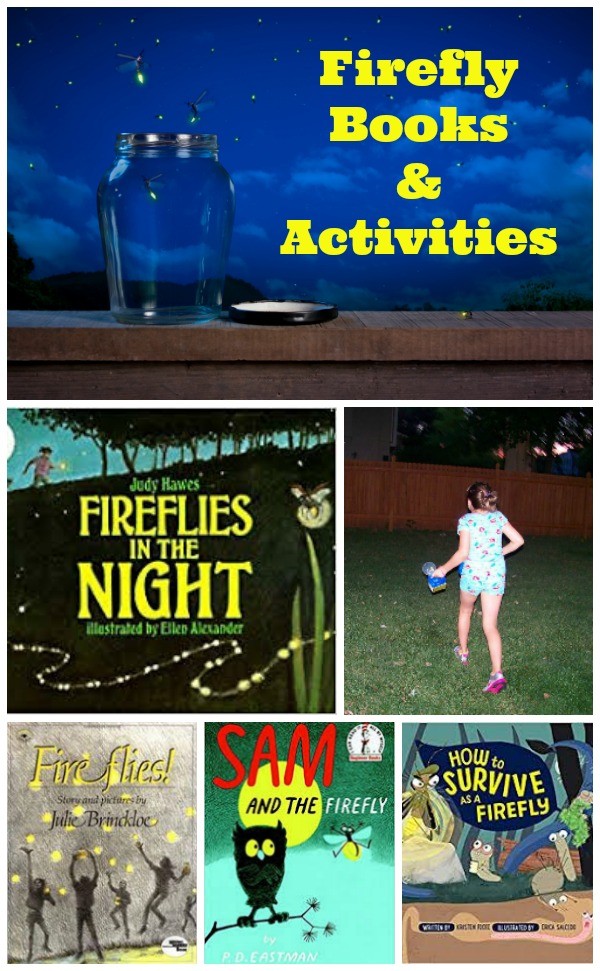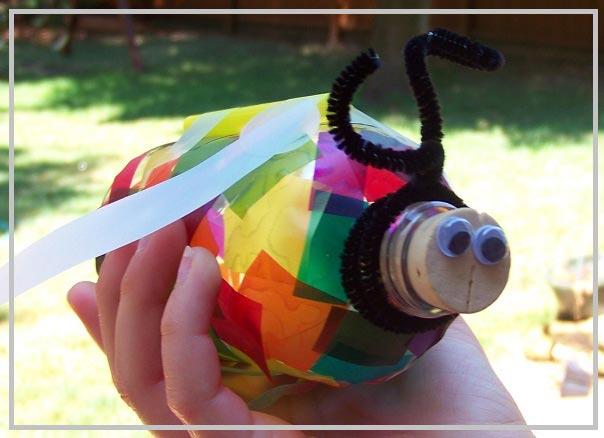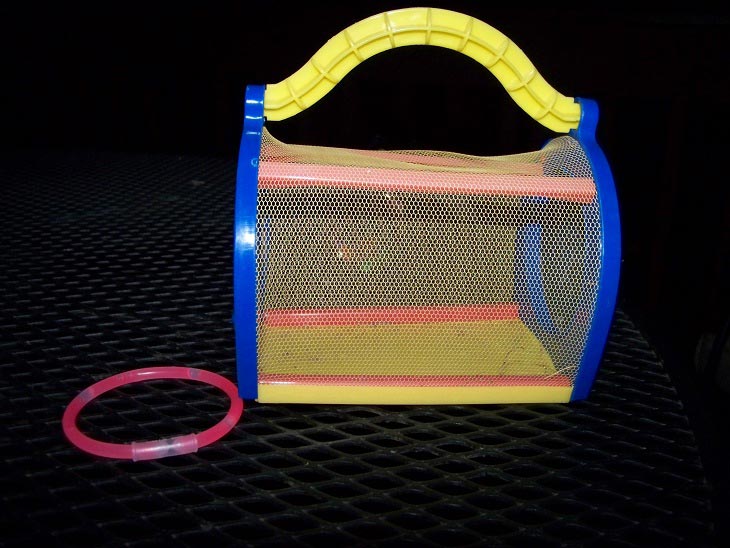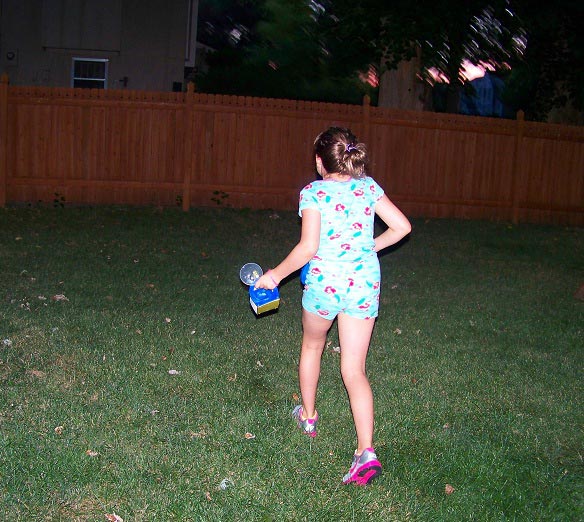Fun facts about fireflies with this summer science activity!
Fireflies are such a summer tradition — spending a warm night outdoors trying to scout out their little lights in the dark.
Learn the science behind those “glowing butts” with these fun firefly and lightning bug books and activities!

Firefly Facts, Activities & Science for Kids
As a kid, I remember those warm summer nights when all the kids in our neighborhood would run around chasing “lightning bugs”!
It was an annual tradition — catching some to keep in a jar, watching them glow and then releasing them back into the night before heading inside for bed.
And SO many questions would always come to mind —
Why do they only show up on hot summer nights?
How do they glow like that?!!
And why do some people call them fireflies while others refer to them as lightning bugs?
If you and your kids also enjoy this annual tradition, you’ll LOVE these wonderful books and activities along with affiliate links for favorite items that will help you to get up close and personal with these amazing insects!

Firefly Facts for Kids
One of the reasons I love to include books with many of our activities is the fun facts that both kids and adults can learn about the topic.
But just in case you’re heading out TONIGHT and don’t have time to read before your hunt, here are a few quick facts:
- Fireflies are also called ‘lightning bugs’. The name changes based on the region you live in — Mental Floss has a fun map that shows which term is used more frequently across the various states.
- Fireflies use their light to attract a mate.
- They also use their light to attract prey (younger kids may have a hard time with this concept but let’s face it, even bugs gotta eat)
- Fireflies make their own light – they have special internal organs for this purpose – this is called ‘bio-luminescence’. (Fun word to try and pronounce 🙂 There are also sea creatures that live in the dark areas of the oceans that have this ability.
Books about Fireflies
Here are some awesome books (both fiction and non-fiction) with more information about fireflies and lightning bugs.
The Very Lonely Firefly by Eric Carle is a cute story about a firefly looking for a friend. He sees a lantern, headlight and other things that he thinks might be a friend, but it’s not until he finds another firefly that his light begins to glow!
A wonderful read for toddlers & preschoolers!
Fireflies by Julie Brinckloe – a Reading Rainbow book about a young boy who catches a jar full of fireflies. But as night approaches, he realizes that he must set them free.
With pencil illustrations and bright yellow color on each page, kids will empathize with the struggle of being memorized by these creatures before releasing them into the night. Perfect for kids ages 4 – 7 years.
Sam and the Firefly by P.D. Eastman – What happens when an owl calls out for someone to play at night? Gus the firefly shows up and all kinds of humorous antics ensue! The text is perfect for kids who enjoy rhyming fun and readers will enjoy the beautiful and funny pictures too.
This old classic, written in 1958, is penned by the same author who wrote Go, Dog, Go! and Are You My Mother? Laugh-out loud fun for ages 3 – 7 years.
Fireflies in the Night by Judy Hawes & Ellen Alexander – a great non-fiction read-about-science book that tells the story of a little girl who visits her grandparents in the country and learns about fireflies. ages 4 – 8 years
Fireflies by Megan Bryant – an All-Aboard Science Reader, this book shares all kinds of fun facts about fireflies and how to make your yard attract more of the glowing bugs.
How to Survive as a Firefly by Kristen Foote is a laugh out loud look at what it takes to become a firefly! Read along as an experienced firefly tells all the larvae what they need to know to ‘survive’. Lots of fun facts, wonderful vocabulary and extended learning ideas are included. Great for ages 6 – 11 years (and adults!)
And for some really scientific details on fireflies (great for tweens & teens) and ‘bio-luminescence’, check out this firefly article at How Stuff Works.

How to Go on a Firefly Hunt
First, I recommend a night outside!
You can see these glowing creatures out your windows too if you dim all the lights in the house but it’s so much more fun to be outdoors for this activity.
Look for fireflies in different locations.
You might start in your backyard one night, visit a neighbors yard (one with more or less trees/plants would be a good comparison) and also visit a park, pond or other outdoor area.
If you plan to ‘catch’ lightning bugs, be sure you use a container that allows them to breathe! No putting a solid top on a container or jar.
A few Firefly Necessities that we love to have with use are a screened-in bug house and a glow-in-the-dark bracelet!

Have kids watch for fireflies and record or talk about what you see.
- How many fireflies did you find?
- When did they start to show up (usually after dusk) and why?
- Were they flying or sitting on something?
- Did you ever find 2 fireflies close together?
There’s so much kids can learn just through observation! Grab a copy of this FREE printable Bug Scavenger Hunt too and see who else hangs out at night.
Become an ‘Official Firefly Watcher’
If you’re planning to spend some time looking for fireflies this summer, your kids may want to become ‘official’ Firefly Watchers (your real title would be a ‘citizen scientist’).
The Museum of Science in Boston asks people from across the U.S. to spend some time watching and reporting their firefly sightings.
It’s easy to register, and kids can keep a field journal to record the days & times they are watching, how many fireflies they see, what color is their light (yep, fireflies have different color lights) and more fun observations.
One of the reasons for this project is that scientists are concerned that fireflies are becoming more scarce. There’s still much to learn about where they are seen each year and why populations are getting smaller.






